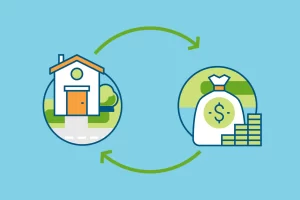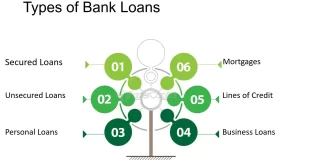Mortgages are a fundamental component of the housing market, providing a means for individuals and families to purchase homes without needing to pay the full purchase price upfront. This article delves into the intricacies of mortgages, including their types, components, the application process, and factors influencing mortgage rates, aiming to provide a comprehensive understanding for prospective homebuyers.
What is a Mortgage?
A mortgage is a loan specifically designed for purchasing property. It is a secured loan, meaning the property itself serves as collateral. If the borrower fails to make payments, the lender has the right to foreclose on the property, selling it to recover the loan amount.

Key Components of a Mortgage
A mortgage is a type of loan specifically used for purchasing real estate. It involves a borrower, typically a homebuyer, obtaining funds from a lender, usually a bank or mortgage company, to buy property. The property itself serves as collateral for the loan. Understanding the key components of a mortgage is essential for anyone looking to navigate the complexities of home financing. This article explores these components in detail, providing a comprehensive overview.
1. Principal
The principal is the amount of money borrowed to purchase the property. For instance, if you buy a house priced at $300,000 and make a $60,000 down payment, your principal would be $240,000. The principal amount decreases over the life of the mortgage as you make payments.
2. Interest Rate
The interest rate is the cost of borrowing the principal, expressed as a percentage. It can be fixed or variable:
- Fixed-Rate Mortgage: The interest rate remains constant throughout the life of the loan, providing predictable monthly payments.
- Adjustable-Rate Mortgage (ARM): The interest rate can change periodically, typically in relation to an index, which can lead to varying monthly payments.
Interest rates are influenced by factors such as the borrower’s credit score, the loan amount, and market conditions.
3. Term
The term of the mortgage is the length of time over which the loan is to be repaid. Common terms include 15, 20, and 30 years. The term affects the monthly payment and the total interest paid over the life of the loan:
- Shorter Terms: Higher monthly payments but less total interest paid.
- Longer Terms: Lower monthly payments but more total interest paid.
4. Down Payment
The down payment is an upfront payment made by the borrower toward the purchase price of the home. It is usually expressed as a percentage of the purchase price. For example, a 20% down payment on a $300,000 home is $60,000. A larger down payment can result in better loan terms and may eliminate the need for private mortgage insurance (PMI).
5. Monthly Payments
Monthly mortgage payments typically consist of four components, often referred to as PITI:
- Principal: Portion of the payment that reduces the outstanding balance of the loan.
- Interest: Portion that goes to the lender as the cost of borrowing the principal.
- Taxes: Property taxes, which are often collected by the lender and held in escrow to be paid on behalf of the borrower.
- Insurance: Homeowners insurance premiums, which protect against damage to the property and liability. Like taxes, insurance payments are often escrowed.
6. Private Mortgage Insurance (PMI)
Private Mortgage Insurance (PMI) is required by lenders if the down payment is less than 20% of the home’s purchase price. PMI protects the lender in case the borrower defaults on the loan. Once the borrower has built up enough equity in the home, typically 20%, PMI can be canceled.
7. Escrow Account
An escrow account is set up by the lender to pay certain property-related expenses, such as property taxes and homeowners insurance. A portion of the monthly mortgage payment is deposited into the escrow account. This ensures that these expenses are paid on time and helps the borrower manage these costs.
8. Amortization
Amortization is the process of gradually paying off the loan through regular monthly payments. Each payment covers both principal and interest. Early in the loan term, a larger portion of the payment goes toward interest, with the principal portion increasing over time. An amortization schedule shows the breakdown of each payment.
9. Loan Types
There are various types of mortgage loans, each with its own characteristics:
- Conventional Loans: Not insured or guaranteed by the federal government. They typically require a higher credit score and down payment.
- FHA Loans: Insured by the Federal Housing Administration, designed for low-to-moderate-income borrowers with lower down payments.
- VA Loans: Guaranteed by the Department of Veterans Affairs, available to veterans and active-duty military personnel, often requiring no down payment.
- USDA Loans: Offered by the United States Department of Agriculture, aimed at rural homebuyers, often with no down payment required.
10. Closing Costs
Closing costs are fees associated with finalizing the mortgage and purchasing the home. They typically range from 2% to 5% of the loan amount and can include:
- Origination Fees: Charged by the lender for processing the loan.
- Appraisal Fees: Cost of appraising the property’s value.
- Title Insurance: Protects against legal issues with the property’s title.
- Attorney Fees: Legal costs for reviewing and finalizing the transaction.
- Recording Fees: Charges for recording the property’s deed with the local government
Understanding the key components of a mortgage is crucial for making informed decisions when buying a home. By comprehending the principal, interest rate, term, down payment, monthly payments, PMI, escrow accounts, amortization, loan types, and closing costs, borrowers can better navigate the mortgage process and choose the best financing option for their needs. Whether you are a first-time homebuyer or an experienced homeowner, this knowledge can help you secure a mortgage that aligns with your financial goals and circumstances.
1. Principa: This is the amount of money borrowed to purchase the property.
2. Interest: This is the cost of borrowing the principal, expressed as a percentage rate.
3. Term: The duration over which the mortgage must be repaid, typically 15, 20, or 30 years.
4. Monthly Payments: These usually include a portion of the principal, interest, property taxes, and insurance.
Types of Mortgages
1. Fixed-Rate Mortgages (FRMs): The interest rate remains constant throughout the term, providing predictable monthly payments. These are ideal for buyers who plan to stay in their homes long-term.
2. Adjustable-Rate Mortgages (ARMs): The interest rate is fixed for an initial period (usually 5, 7, or 10 years) and then adjusts annually based on market conditions. This can lead to lower initial payments but higher risk over time.
3. Interest-Only Mortgages: For a set period, borrowers pay only interest, resulting in lower initial payments. Eventually, they must start paying both principal and interest, often leading to significant payment increases.
4. FHA Loans: Insured by the Federal Housing Administration, these loans are designed for low-to-moderate income borrowers, requiring lower minimum down payments and credit scores.
5. VA Loans: Available to veterans and service members, these loans, guaranteed by the Department of Veterans Affairs, often require no down payment or private mortgage insurance (PMI).
6. Jumbo Loans: These are for properties that exceed conforming loan limits set by the Federal Housing Finance Agency (FHFA). They typically have stricter credit requirements and higher interest rates.
The Mortgage Application Process
1. Pre-Qualification: This initial step gives a rough estimate of how much a borrower can afford, based on self-reported financial information.
2. Pre-Approval: A more thorough process where the lender verifies the borrower’s income, assets, and credit. Pre-approval letters can strengthen a buyer’s offer on a home.
3. House Hunting: Armed with pre-approval, buyers search for homes within their price range. It’s crucial to consider additional costs like property taxes, maintenance, and insurance.
4.Mortgage Application: Once a property is selected, the buyer completes a formal application. The lender conducts an appraisal to ensure the property’s value supports the loan amount.
5. Loan Processing and Underwriting: The lender verifies all information, assesses risk, and determines whether to approve the loan. This includes evaluating the borrower’s credit history, debt-to-income ratio, and employment status.
6. Closing: If approved, the final step involves signing numerous documents. The borrower pays closing costs, which can include loan origination fees, title insurance, and recording fees. The lender then disburses the loan funds to the seller, and the borrower takes ownership of the property.
Factors Influencing Mortgage Rates
1. Credit Score: Higher credit scores generally qualify borrowers for lower interest rates, as they represent less risk to lenders.
2. Loan-to-Value Ratio (LTV): This ratio compares the loan amount to the property’s value. Lower LTV ratios typically result in better rates because they indicate lower risk.
3. Market Conditions: Mortgage rates fluctuate based on economic factors, including inflation, unemployment rates, and the Federal Reserve’s monetary policy.
4. Loan Type and Term: Different types of loans (e.g., FRMs vs. ARMs) and terms (e.g., 15-year vs. 30-year) come with varying rates. Shorter-term loans usually have lower rates but higher monthly payments.
5. Down Payment: Larger down payments can secure lower interest rates by reducing the lender’s risk.
6. Property Location and Type: Rates can vary based on geographic location and whether the property is a primary residence, secondary home, or investment property.
Pros and Cons of Mortgages
Pros:
– Enables Homeownership: Mortgages make it possible for people to buy homes without needing the full purchase price upfront.
– Building Equity: As you pay down the principal, you build equity, which can be a valuable financial asset.
– Tax Benefits: In many regions, mortgage interest payments are tax-deductible.
– Fixed Payments: Fixed-rate mortgages provide stability with predictable monthly payments.
Cons: – Interest Costs: Over the life of a mortgage, interest payments can add up to a substantial amount, often exceeding the original loan amount.
– Interest Costs: Over the life of a mortgage, interest payments can add up to a substantial amount, often exceeding the original loan amount.
– Risk of Foreclosure: Failure to meet payment obligations can lead to foreclosure and loss of the home.
– Long-Term Commitment: Mortgages require a long-term financial commitment, which can be burdensome if personal circumstances change.
– Market Fluctuations: The property value may decrease, resulting in a situation where the loan balance exceeds the property’s worth.
Conclusion
Mortgages are a powerful tool for achieving homeownership, but they come with significant responsibilities and risks. Understanding the types of mortgages, the application process, and the factors influencing mortgage rates can help prospective buyers make informed decisions. It’s crucial to assess one’s financial situation, compare different loan options, and seek professional advice to secure the best possible mortgage terms. With careful planning and consideration, a mortgage can be a stepping stone to financial stability and a cornerstone of personal wealth.


